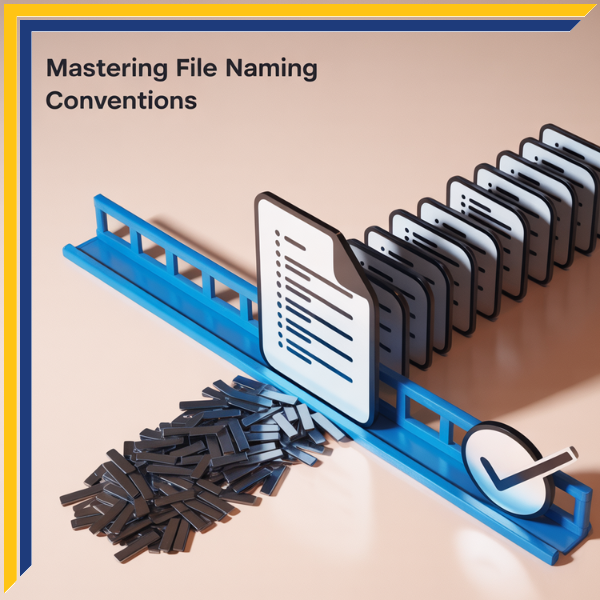Description
What are the rules for naming folders and files in your intranet? In names, do we separate words with spaces, dashes or underscores, or do we use CamelCaseNamingConventions? Is there a limit to nested folder depth? Will we even use folders, or just metadata? This file is a short draft for you to start in this important area.
The absence of clear File Naming Conventions can lead to chaos in a digital environment. It can turn a modern intranet into a confusing and inefficient file repository. This essential guide provides a foundational set of rules to ensure that every document, folder, and file is named logically and consistently. By establishing these guidelines early in your project, you build a system that is easy to navigate and simple to maintain for all users. A well-structured naming system is a cornerstone of a healthy and scalable digital workplace.
Why Adhering to File Naming Conventions Is Crucial
Consistency in naming isn’t just about tidiness; it’s a critical component of usability and efficiency. When everyone follows the same naming rules, it becomes significantly easier for users to find the information they need, reducing the time spent searching and increasing productivity. A lack of clear File Naming Conventions can lead to fragmented content, duplicate files, and a high level of frustration for employees. It also complicates automated processes like data migration and backup, adding unnecessary complexity and risk.
Furthermore, a well-defined naming structure is vital for searchability. While modern search engines are powerful, they are most effective when supported by organized, consistently named files. A logical naming scheme helps with discoverability, ensuring that even if a user doesn’t know exactly where a file is, they can easily find it using relevant keywords. This proactive approach to content management prevents a cluttered intranet that feels more like a digital attic than a functional workspace. For more insight into best practices for digital information management, you can refer to the extensive resources provided by the Digital Curation Centre.
Key Elements of Effective File Naming Conventions
A comprehensive set of File Naming Conventions should address several key questions about how your content is organized.
- Structure: This is about how you format the name itself. Should you use spaces, dashes, or underscores to separate words? We advise against using spaces as they can cause issues with some applications. Dashes and underscores are generally safer and more universally supported.
- Sequencing: For document series, the naming convention should include a date, version number, or a combination of both to ensure proper sequencing. Using a “YYYY-MM-DD” format is highly recommended for sorting accuracy.
- Metadata vs. Folders: A critical question to answer in your File Naming Conventions guide is whether you will rely on nested folders, metadata, or a combination of both. While folders provide a familiar, hierarchical structure, metadata allows for more flexible and powerful searching. Your guide should clearly define when to use a folder versus when to apply metadata tags to ensure consistency across the intranet.
- Brevity and Clarity: Names should be descriptive but not overly long. A good naming convention provides enough context for a user to understand the content of a file without having to open it.
Developing and enforcing a clear set of File Naming Conventions is a small investment of time that yields massive returns in a cleaner, more organized, and more efficient intranet. It’s a key step in moving your organization toward a more mature state of digital governance. For a deeper look at the rules behind a successful intranet, you can explore our Governance Guide. This resource provides the high-level principles that these naming conventions support.
FAQs
Why are File Naming Conventions so important for an intranet? File Naming Conventions are crucial because they ensure a digital workplace is easy to navigate and simple to maintain. A consistent naming system significantly improves usability and efficiency, allowing users to find the information they need quickly and preventing a cluttered, confusing file repository.
What are the key rules for naming files? Effective conventions address structure, sequencing, and clarity. It’s recommended to use dashes or underscores instead of spaces in names. For sorting, you should use a “YYYY-MM-DD” date format. Most importantly, names should be descriptive and concise so a user can understand the content without having to open the file.
Will our intranet use folders or metadata for organization? This guide helps you decide whether to rely on a traditional folder structure, use metadata tags, or a combination of both. While folders provide a familiar hierarchy, metadata allows for more flexible and powerful searching. This guide helps you define when and how to use each method to ensure consistency and improve searchability.







Reviews
There are no reviews yet.